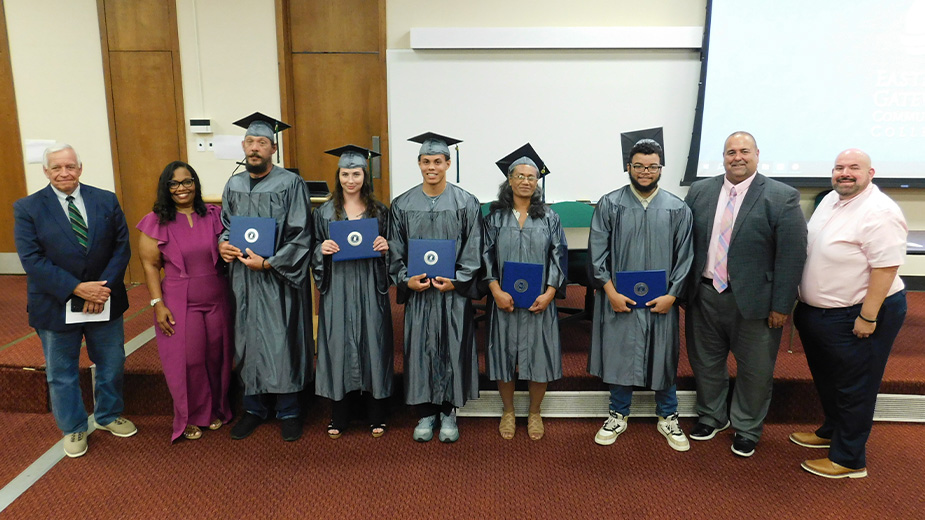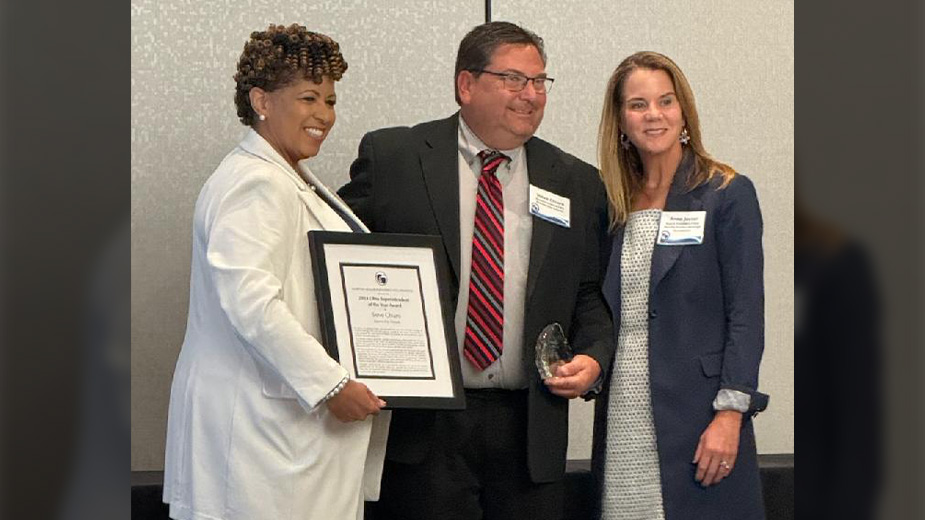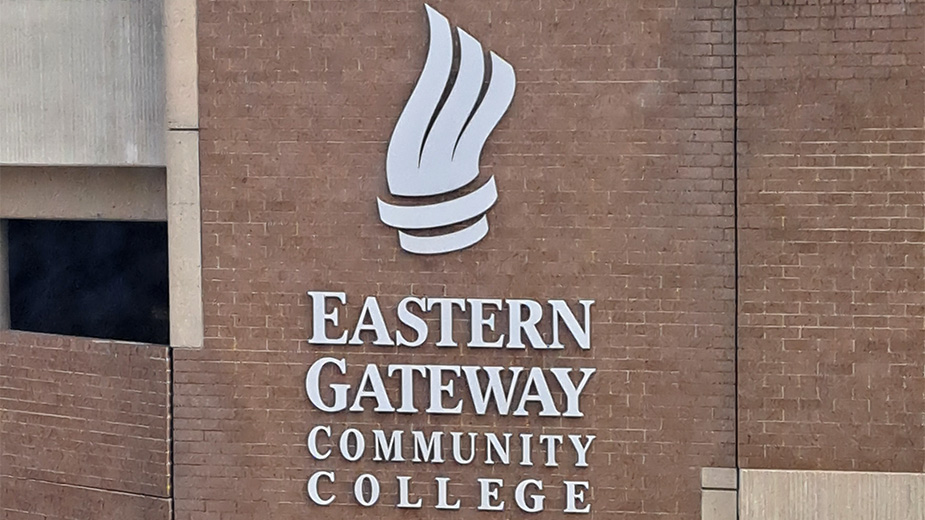YSU-OEA Allege Program Cuts Represent ‘One-Sided Approach’
YOUNGSTOWN, Ohio – The Youngstown State University faculty union raised its voice at a rally today as it continues to protest the elimination of academic programs and faculty.
Union leaders said they are urging the board of trustees to instead find a more comprehensive way to downsize so as not to diminish the school’s academic reputation and repel students.
The protest, which attracted about 50, took place at 10 a.m. on campus, below the windows of a room in Kilcawley Center where the university’s board was having a meeting. Some at the rally wore academic gowns and caps with an “x” in yellow tape across their chests as a sign of being marked for cuts.
Board Chair John Jakubek addressed the rally at the conclusion of this morning’s board of trustees, issuing the following statement:
“More than a year ago, under YSU’s strategic plan and at the direction of the Higher Learning Commission, YSU launched a plan to study and optimize the university’s portfolio of academic programs and courses,” Jakubek said, “It’s something that YSU had not done in decades. The process took more than a year and was, as attested to by Chet Cooper, president of the YSU Academic Senate, conducted under the tenets of shared governance and with the participation of all on campus, especially faculty.
“That study revealed a set of 26 programs – some with zero students enrolled and others with only a handful of students enrolled – that were determined to be sunset and are scheduled to be discontinued by Fall 2022. In conjunction with that, the university is also reducing the number of faculty on campus by a handful, an action supported via the faculty union’s contract.
“All of this is in the context of continued, significant enrollment declines and a budget that projects a $10 million structural deficit next fiscal year.”
Jakubek reiterated the board’s support of the process and the actions taken, adding that the university will continue to turn over every stone to help YSU be more effective and efficient.
The trustees this semester announced the cutting of eight faculty and 26 courses of study. In addition, The Center for Islamic Studies and the Center for Judaic and Holocaust Studies are also being eliminated.

While the faculty union acknowledges that cuts are necessary, it would first like to see a university-wide performance review to determine where to make the cuts. It claims that all cuts are targeting the academic side, while nonacademic units are being left alone.
“We have asked the board through the faculty senate to fund a performance audit to see what is core to our mission and what Is not,” said Susan Clutter, president of the faculty union. “That hasn’t been done since 2001. It would identify spending that is not revenue-based and then trim it, instead of cutting people and [academic] programs.”
Clutter said the union heard that the administration agreed to the idea but has yet to implement an audit. “If they don’t do it, the union will,” she said.
Faculty numbers have been in sharp decline over the past decade, she said. The union had 420 members in 2010, and now has a little over 300.
“We added 25 faculty who are not members of the union,” Clutter said. “And some [who retired] were replaced by lecturers. They are good but they don’t do things like research projects. As a result, students lose out on an opportunity and the university loses out on research grants. If we keep adding only lecturers and part-time faculty, we will be no different than a community college.”
Albert Sumell, a professor of economics and the faculty union’s chief negotiator, said the union understands something must be done to address the budget deficit and declining revenues. But the measures being taken are one-sided and will harm the school’s integrity and future viability.
Clutter pointed out that YSU’s athletic budget will rise by $885,000, and non-academic spending is set to rise by about $4 million.
“I’m not advocating cutting athletic spending,” Sumell said. “But we don’t have to increase it by $885,000 either. That amount is more than enough to cover the salaries of all the faculty being cut. We could keep the athletic budget the same and still keep the faculty.”
Ron Strollo, athletic director, said the increase in his budget is actually a restoration from previous levels.
“It’s not an apples to apples comparison,” Strollo said, “because the increase is based on a COVID year. For the previous budget, we were entering a precarious situation and had either not filled or laid off 22 positions and made a variety of other cuts because we knew we’d be down on external revenue.
“This year’s budget reflects the reinstating of some of those positions, which makes it look like a significant increase.”
Strollo said about $250,000 of his department’s budget increase reflects rises in scholarships. The department’s annual budget is roughtly $16 million.
“A third of our budget is scholarships,” Strollo said. “When tuition, fees, room and board are increasd, that affects our budget negatively. But the corresponding revenue it brings in comes back to the university [and not our department]. So it eliminates the increase [in spending].”
Strollo pointed out that recent the addition of three sports teams are part of a university initiative to increase enrollment.
“We had a little over 400 student-athletes a few years ago and now we are up to 535,” he said. “We added women’s lacrosse, a men’s swimming team and doubled the size of our cross country team. We did that to help stop the decline in enrollment.”
Thursday’s rally was organized after student and community groups notified the union that they wanted to lend their support to fighting academic cuts. Several student representatives spoke at the rally to show their support
Mark Vopat, a professor of philosophy and the faculty union’s spokesman, said the board hasn’t given the same degree of scrutiny to non-academic departments as it has to faculty.
He said the elimination of the Center for Islamic Studies and the Center for Judaic and Holocaust Studies could be avoided because the professors being cut – Mustansir Mir and Jacob Labentz – are endowed chair positions.
“The [endowments] have money to offset the cost of those positions, but the university refuses to look at that option,” Vopat said.
“It’s been a one-sided approach to the problem,” he continued. “No one is advocating getting rid of varsity athletics. But maybe it’s not time to grow athletics. And we haven’t seen the same cuts on the administrative side, the same loss of positions.”
Vopat said that more full-time lecturers will be cut in January, and 24 faculty who took buyouts recently were never replaced.
“At what point do we stop?,” he asked. “You can’t cut all the way to financial stability.”
Vopat said the union has also proposed stepping up the recruitment of international students as a way to offset declining enrollment and the area’s shrinking population.
Pictured: Albert Sumell, YSU professor of economics and chief negotiator for the YSU-OEA, addresses those gathered.
Copyright 2024 The Business Journal, Youngstown, Ohio.



